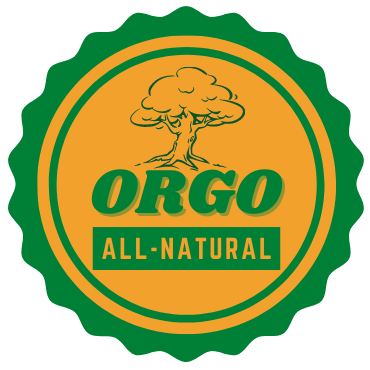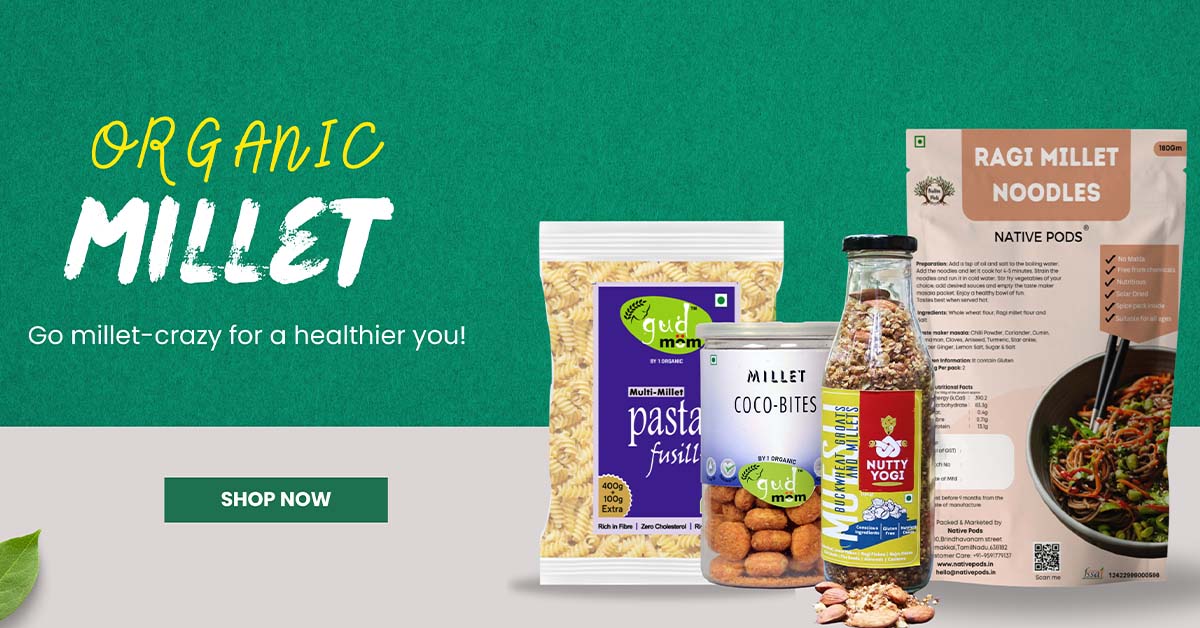Welcome to our exploration of the diverse world of millets in India. Millets, often referred to as “nutri-cereals,” have been a staple in Indian diets for centuries. In this blog, we will delve into the rich tapestry of types of millets, offering a comprehensive list of millet names and highlighting the nutritional significance of these different kinds of millets. Join us on this journey as we unlock the secrets of the various types of millets in India, shedding light on their unique characteristics and culinary versatility. Whether you’re a health enthusiast, a culinary adventurer, or simply curious about these ancient grains, this blog is your gateway to the world of India’s cherished millets. Millets are high in nutrients, vitamins and antioxidants making them highly beneficial.
Millets have a fascinating history in India. Imagine going back in time to ancient civilizations, where millets were a crucial part of people’s diets. These tiny grains have been grown and consumed for thousands of years. They were like the superheroes of agriculture because they could grow in diverse climates, even in areas with less rainfall.
In simpler terms, millets were like the trusty food that sustained our ancestors through thick and thin. They were reliable, nutritious, and versatile, making them an integral part of Indian culture and cuisine. So, as we explore the different types of millets in India.
What Are Millets?
Millets are a type of whole grain containing all the essential nutrients for human wellness. You can name it protein or vitamins or minerals or fiber, the tiny grain of millet is capable of providing you everything. It is a tribal- grassy crop of Asia and Africa. Now, India is the number1 producer of millets, sharing 20% of world production and 80% of Asia’s production. Below are mentioned 8 millets varieties in India:

Different Types of Millets in India
1. Sorghum Millet/ Jowar
Sorghum millet is commonly called great millet or jowar, which is one of the best millets to eat in the Indian subcontinent. It is the fifth most important crop worldwide after rice, wheat, maize, and barley. Sorghum is considered as a staple food for the people of Rajasthan, Punjab, Haryana, UP and Southern part of India. It has a slightly bitter taste and in brownish in colour. It is not only grown in India but also in other regions like: central America , Africa.
Health Benefits:
- It is rich in protein and fiber
- It is gluten free
- Good for people suffering from cardiovascular issues
2. Pearl Millet/ Bajra
Pearl millet is well accepted for its growing capacity in adverse climates characterized by drought, low soil fertility, low moisture and high heat. It is also known as Bajra in Hindi, Sajjalu in Telugu, Sajje Kannada and Kambu in Tamil. The culinary uses of pearl millet include roti, dosa, porridge upma etc.
Health Benefits:
- It is rich in protein and fiber
- Boosts immunity
- Helps to maintain blood sugar levels.
3. Finger Millet/ragi
Finger millets are commonly known as ragi in India, kodo in Nepal and kurakkan in Sri Lanka. It can be ground into flour and prepared with different dishes like roti, laddu modak etc. even the ragi flour consumed with milk and yogurt. It gives us tons of essential nutrients that are needed to maintain good health.
Health Benefits:
- Has a very high calcium content which makes it very good for bones.
- Boosts immunity
- Helps in weight loss.
Also Read:- Millets Benefits, Side Effects and Nutritional Value
4. Foxtail Millet/Kaon/ Kangi
Foxtail millet is a grassy plant with slim, vertical leafy stems which can grow up to a height of 4-7 feet. It is the most grown millet species in Asia and second most planted millet across the world. This is considered as the best millet to eat as a substitute for rice.
Health Benefits:
- This millet is high in Vitamins A and E, phosphorous and potassium
- rich in fibre
- Rich in Antioxidants
5. Little Millet/ Sama/ Kutki
Little millet is also known as Kutki, Shavan and Sama in different languages of India. It is packed with calcium, iron, potassium, zinc and phosphorus. It is also used in place of rice during religious preparations. Plus, it is a great millet to add to your weight loss diet. It is usually served in India in an upma, mixed with vegetables.
Health Benefits:
- This millet is high essential nutrients
- Good for skin
- Rich in Antioxidants
Also Read:- Health Benefits of Millets
6. Kodo Millet
Not to be confused with Ragi, Kodo millet is a little smaller in size. It is a drought tolerant crop and widely grown in the Indian subcontinent and West Africa. Kodo millet khichdi, upma, dahi vada and vegetable chilla are the most common recipes made with it.
Health Benefits:
- Good for nervous system
- Easily digestible
- Rich in Antioxidants
7. Broomcorn Millet
It’s a common type of millet in India, and has many names such as proso millet, hog millet, and kashfi millet. It helps in balancing sugar level as it has low glycemic index, thus can be a good addition in the diet of diabetic patients. It is a seasonal crop and is usually grown in drought and extreme weather conditions.
Health Benefits:
- Good for heart patients
- can be used as birdseed
- Rich in Antioxidants and essential nutrients
Also Read:- Best Millet Brands
8. Barnyard Millet
Barnyard is most popular with the name Sanwa. The richness of calcium and phosphorus makes it ideal to maintain bone health. It is stacked with dietary fiber thus helpful for weight loss diet. It is a white-coloured seed and is very nutritious. In India babies are usually fed barnyard millet as it is very nutritious
Health Benefits:
- Rich in carbs and protein
- Good for bones
- can be used as baby food.
9. Brown Top Millet (Korle)
It is traditionally grown in india and is generally used in desserts. This millet is called super food and is widely used in food manufacturing and is also used in baked goods.
Health Benefits:
- Rich in essential vitamins
- Rich in protein
- Good for overall health
10. Buckwheat Millet (Kuttu)
It is widely used as a fasting food in India. It is one of most popular millets used worldwide. It is enriched in fibers and essential vitamins.
Health Benefits:
- Rich in carbs and protein
- Less saturated fats
- Good for mental health
Nutritional Value of the Different Types of Millet
| Nutrients | Finger millet | barnyad millet | Little millet | Foxtail millet | Pearl Millet |
| Energy | 350 | 352 | 341 | 380 | 348 |
| Carbohydrates | 67 | 70 | 62 | 77 | 74 |
| Iron | 8 | 10 | 12 | 14 | 9 |
| Calcium | 44 | 38 | 48 | 52 | 60 |
| Phosphorus | 296 | 270 | 290 | 302 | 320 |
| potassium | 320 | 288 | 270 | 290 | 330 |
| Thiamine | .34 | .42 | .32 | .31 | .42 |
Names of Millet in different Languages
| English | Sorghum Millet | Pearl millet | Finger millet | Little millet | Kodo millet | Barnyard millet |
| Hindi | Jowar | Bajra | nachani | kutki | koden | jhangora |
| Tamil | Cholam | kambu | keppai | saamai | varagu | kuthiravalai |
| Punjabi | Jowar | bajra | mandhuka | swank | kodra | swank |
| Bengali | Jowar | bajra | marwa | sama | kodo | shyama |
| Malayalam | cholam | kambam | panjipulu | chama | koovaragu | kavada pulu |
| Oriya | Juara | bajra | mandia | suan Gurji | kodua | khira |
Health Benefits of Millets
Millet is often called a superfood and has many health benefits:
Good for Digestive Health
Millets are extremely rich in fiber and which makes it very easy for us to digest millet based foods. It also promotes growth of bacteries which are good for digestion and stomach.
Gluten free and a substitute for wheat or rice
Millets are gluten free which makes them very good for people who are suffering from gluten related issues. They can be used as an alternative to wheat or rice.
Helps in heart related disorders
Millets are rich in essential vitamins and minerals. It ahs very high fiber content which makes it really helpful in maintaining cholesterol levels.
Helps in weight loss
Millets are rich in fiber and have low glycemic index which makes them really helpful in weight management. They give a feeling of fullness and does not make you feel hungry for long.
Rich in antioxidants
Millets are rich in antioxidants like catechins which helps in fighting against free radicals. This really helps in avoiding chronic diseases like cancer.
Rich in fiber
Millets are extremely rich in fiber which makes it really good for digestion. It helps in preventing constipation and regulates the movement of bowel.
Good for skin health
Millets are rich in vitamins and and antioxidants. It keeps the skin hydrated and keeps you young.
Improves overall Immunity
Millets are rich in zinc, iron and essential vitamins. It has antioxidants which fights against free radicals. It really increases the overall immunity of the body.
Improves cognitive ability
Millets are rich in essential nutrients and helps in overall brain growth and development. It reduces anxiety and helps in proper nerve functioning.
Detoxification Property
It helps in flushing toxins from the body. It is good for digestion overall bowel movement which flushes out toxins from the body easily.
Conclusion
In a nutshell, we’ve taken a fun journey through the world of millets in India. These tiny grains, like Bajra, Ragi, and Jowar, have been our nutritious pals for ages. They grow strong even when there’s not much rain, which is super cool.
We found out that these millets are not just yummy, they’re also packed with good stuff like vitamins and minerals. Plus, they can help our planet because they don’t need a lot of water to grow.People in India use these millets in all kinds of foods, from dosas to rotis and even in special fasting dishes. It’s like a tasty adventure discovering all the ways you can enjoy them.
So, remember, millets are not just ancient grains; they’re our buddies for a healthy and green future. Let’s keep enjoying and celebrating these fantastic types of millets in India!













































